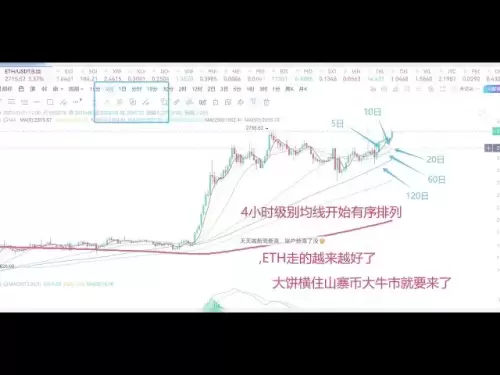-
 Bitcoin
Bitcoin $110,916.8562
0.56% -
 Ethereum
Ethereum $2,665.3175
-0.04% -
 Tether USDt
Tether USDt $0.9999
-0.01% -
 XRP
XRP $2.4384
0.16% -
 Solana
Solana $186.1410
3.58% -
 BNB
BNB $684.5743
0.25% -
 USDC
USDC $0.9998
0.00% -
 Dogecoin
Dogecoin $0.2452
1.09% -
 Cardano
Cardano $0.8163
2.14% -
 TRON
TRON $0.2754
1.09% -
 Sui
Sui $3.8551
-7.06% -
 Hyperliquid
Hyperliquid $35.3757
11.88% -
 Chainlink
Chainlink $16.8290
1.65% -
 Avalanche
Avalanche $25.4956
5.01% -
 Stellar
Stellar $0.3036
1.09% -
 Shiba Inu
Shiba Inu $0.0...01552
1.07% -
 Hedera
Hedera $0.2059
1.45% -
 Bitcoin Cash
Bitcoin Cash $437.2416
4.65% -
 UNUS SED LEO
UNUS SED LEO $8.8641
-0.02% -
 Toncoin
Toncoin $3.1588
-0.63% -
 Polkadot
Polkadot $4.9634
1.49% -
 Litecoin
Litecoin $100.8590
2.09% -
 Monero
Monero $393.0611
-1.45% -
 Bitget Token
Bitget Token $5.7210
8.16% -
 Pepe
Pepe $0.0...01561
7.14% -
 Pi
Pi $0.7843
-6.37% -
 Dai
Dai $0.9999
-0.01% -
 Ethena USDe
Ethena USDe $1.0002
-0.03% -
 Uniswap
Uniswap $6.5187
1.55% -
 Bittensor
Bittensor $464.4483
-1.38%
What is the best way to set the MACD indicator parameters? What is the difference between short-term and medium- and long-term parameters?
MACD settings can be adjusted for different trading strategies: short-term (5, 13, 8), medium-term (12, 26, 9), and long-term (24, 52, 18) to capture various trend durations.
May 23, 2025 at 11:08 am
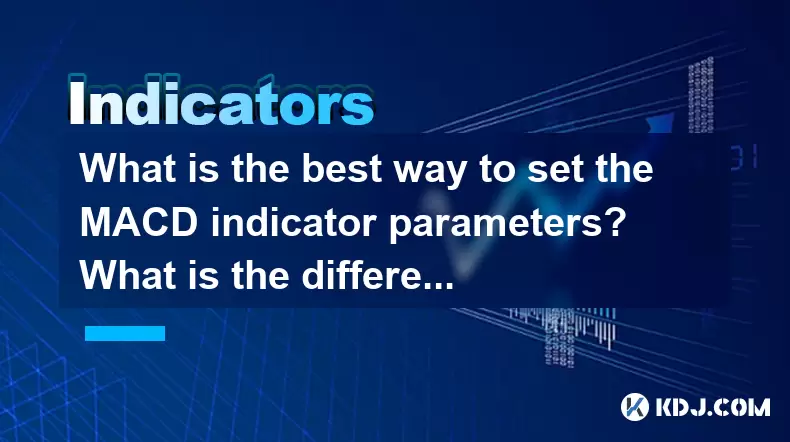
The Moving Average Convergence Divergence (MACD) is a widely used technical indicator in the cryptocurrency trading community. It helps traders identify potential buy and sell signals through the analysis of moving averages. Setting the right parameters for the MACD can significantly impact the effectiveness of your trading strategy. In this article, we will explore the best ways to set MACD indicator parameters and discuss the differences between short-term, medium-term, and long-term settings.
Understanding MACD Basics
Before delving into the specifics of setting MACD parameters, it's essential to understand the basic components of the MACD indicator. The MACD consists of two lines: the MACD line and the signal line. The MACD line is calculated by subtracting the 26-period exponential moving average (EMA) from the 12-period EMA. The signal line is typically a 9-period EMA of the MACD line. The interaction between these two lines generates trading signals.
Setting MACD Parameters
The standard settings for the MACD are 12, 26, and 9, representing the short-term EMA, the long-term EMA, and the signal line, respectively. However, these settings can be adjusted to suit different trading strategies and timeframes. Here's how to set MACD parameters:
Choose the Right Timeframe: The timeframe you choose for your trading will influence the MACD parameters. For short-term trading, you might use a shorter timeframe, while longer-term trading might require a longer timeframe.
Adjust the Short-Term EMA: The default setting for the short-term EMA is 12. To make the MACD more responsive to price changes, you can decrease this value. For example, setting it to 8 or 10 can help in identifying trends more quickly.
Adjust the Long-Term EMA: The default setting for the long-term EMA is 26. Increasing this value can help filter out short-term fluctuations and focus on longer-term trends. Setting it to 30 or 34 might be beneficial for longer-term trading.
Adjust the Signal Line: The default setting for the signal line is 9. Adjusting this can help fine-tune the sensitivity of the MACD signals. A shorter period, such as 7 or 8, can make the indicator more responsive, while a longer period, like 10 or 11, can help reduce false signals.
Short-Term MACD Parameters
Short-term trading in the cryptocurrency market often involves holding positions for a few hours to a few days. Short-term MACD parameters are designed to be more sensitive to price movements, allowing traders to capitalize on quick market changes. Here are some common short-term MACD settings:
5, 13, 8: This setting uses a 5-period EMA for the short-term, a 13-period EMA for the long-term, and an 8-period EMA for the signal line. These settings are more responsive to price changes and can help identify short-term trends.
8, 21, 5: Another popular setting for short-term trading, this configuration uses an 8-period EMA for the short-term, a 21-period EMA for the long-term, and a 5-period EMA for the signal line. This setup can help traders capture quick market movements.
When using short-term MACD parameters, traders should be aware that the indicator may generate more false signals due to its increased sensitivity. Therefore, it's crucial to combine the MACD with other technical indicators or fundamental analysis to confirm signals.
Medium-Term MACD Parameters
Medium-term trading in the cryptocurrency market typically involves holding positions for a few days to a few weeks. Medium-term MACD parameters aim to balance sensitivity and reliability, making them suitable for traders looking to capitalize on intermediate trends. Here are some common medium-term MACD settings:
12, 26, 9: The standard MACD settings are often used for medium-term trading. These settings provide a good balance between responsiveness and reliability, making them suitable for identifying intermediate trends.
10, 24, 7: This setting uses a 10-period EMA for the short-term, a 24-period EMA for the long-term, and a 7-period EMA for the signal line. These settings can help traders capture medium-term trends while still being responsive to price changes.
When using medium-term MACD parameters, traders should be prepared to hold positions longer than with short-term settings. It's essential to monitor the market closely and adjust your strategy based on the overall trend and market conditions.
Long-Term MACD Parameters
Long-term trading in the cryptocurrency market involves holding positions for weeks to months. Long-term MACD parameters are designed to filter out short-term fluctuations and focus on significant, long-lasting trends. Here are some common long-term MACD settings:
24, 52, 18: This setting uses a 24-period EMA for the short-term, a 52-period EMA for the long-term, and an 18-period EMA for the signal line. These settings are less sensitive to short-term price movements and can help identify long-term trends.
30, 60, 20: Another popular setting for long-term trading, this configuration uses a 30-period EMA for the short-term, a 60-period EMA for the long-term, and a 20-period EMA for the signal line. This setup can help traders focus on significant market trends.
When using long-term MACD parameters, traders should be prepared to hold positions for extended periods. It's crucial to monitor the overall market trend and adjust your strategy based on long-term indicators and fundamental analysis.
Differences Between Short-Term, Medium-Term, and Long-Term Parameters
The main differences between short-term, medium-term, and long-term MACD parameters lie in their sensitivity to price movements and the duration of the trends they aim to capture. Here's a detailed comparison:
Sensitivity: Short-term MACD parameters are the most sensitive to price movements, making them suitable for identifying quick trends. Medium-term parameters balance sensitivity and reliability, while long-term parameters are the least sensitive, focusing on significant, long-lasting trends.
Trend Duration: Short-term parameters are designed to capture trends that last from a few hours to a few days. Medium-term parameters focus on trends that last from a few days to a few weeks, while long-term parameters aim to identify trends that last from weeks to months.
False Signals: Short-term MACD parameters are more likely to generate false signals due to their increased sensitivity. Medium-term parameters have a moderate risk of false signals, while long-term parameters are less likely to generate false signals but may miss short-term opportunities.
Holding Period: Short-term trading with MACD parameters involves holding positions for a short duration, typically a few hours to a few days. Medium-term trading involves holding positions for a few days to a few weeks, while long-term trading involves holding positions for weeks to months.
Practical Example of Setting MACD Parameters
To illustrate how to set MACD parameters in a trading platform, let's use a hypothetical example with a popular trading platform like TradingView. Here's how you can adjust the MACD settings:
Open the TradingView Platform: Log in to your TradingView account and open the chart of the cryptocurrency you want to analyze.
Add the MACD Indicator: Click on the "Indicators" button at the top of the chart, search for "MACD," and add it to the chart.
Access MACD Settings: Once the MACD indicator is added to the chart, click on the settings icon (usually a gear or cog) next to the MACD indicator on the chart.
Adjust the Parameters: In the settings window, you will see the default MACD parameters (12, 26, 9). To adjust these, enter the new values for the short-term EMA, long-term EMA, and signal line. For example, if you want to use short-term settings of 5, 13, 8, enter these values into the respective fields.
Apply the Changes: After entering the new values, click "OK" or "Apply" to update the MACD indicator with your custom settings.
Analyze the Chart: With the new MACD settings applied, you can now analyze the chart to identify potential buy and sell signals based on the interaction between the MACD line and the signal line.
Frequently Asked Questions
Q: Can I use different MACD parameters for different cryptocurrencies?
A: Yes, you can use different MACD parameters for different cryptocurrencies. Each cryptocurrency may have unique price movement patterns, and adjusting the MACD parameters can help you better capture the trends specific to each asset.
Q: How often should I adjust my MACD parameters?
A: The frequency of adjusting your MACD parameters depends on your trading strategy and the market conditions. Some traders may adjust their parameters weekly or monthly, while others may do so based on significant market changes or shifts in their trading strategy.
Q: Is it necessary to use other indicators alongside the MACD?
A: While the MACD can be a powerful tool on its own, using it in conjunction with other technical indicators can help confirm signals and reduce the risk of false positives. Common indicators used alongside the MACD include the Relative Strength Index (RSI), Bollinger Bands, and moving averages.
Q: Can the MACD be used for all trading timeframes?
A: Yes, the MACD can be used for all trading timeframes, from short-term scalping to long-term position trading. However, the effectiveness of the MACD will depend on the chosen parameters and how well they align with the specific timeframe and trading strategy.
Disclaimer:info@kdj.com
The information provided is not trading advice. kdj.com does not assume any responsibility for any investments made based on the information provided in this article. Cryptocurrencies are highly volatile and it is highly recommended that you invest with caution after thorough research!
If you believe that the content used on this website infringes your copyright, please contact us immediately (info@kdj.com) and we will delete it promptly.
- Unlike Previous Bull Market Rallies, Bitcoin's (BTC) Current Momentum Appears to Be Unfolding Without Signs of Excessive Market Euphoria
- 2025-05-23 16:50:16
- The Altcoin Market Is Heating Up Again and Though It Might Not Be Reflected on the Daily Charts
- 2025-05-23 16:50:16
- Terra Luna Classic (LUNC) price is up 1.7% in the last 24 hours to trade at $0.00006622
- 2025-05-23 16:45:14
- April 2025 will be remembered as a particularly dark month for the Livret A
- 2025-05-23 16:45:14
- By Partially Dismissing Bitcoin SV (BSV) Investors' Class Action Lawsuit, the UK Court of Appeal Dampened the Hopes of Thousands of Holders
- 2025-05-23 16:40:14
- Former President Donald Trump hosted an exclusive dinner for hundreds of top investors of his 'memecoin' cryptocurrency at his golf club outside of Washington
- 2025-05-23 16:40:14
Related knowledge
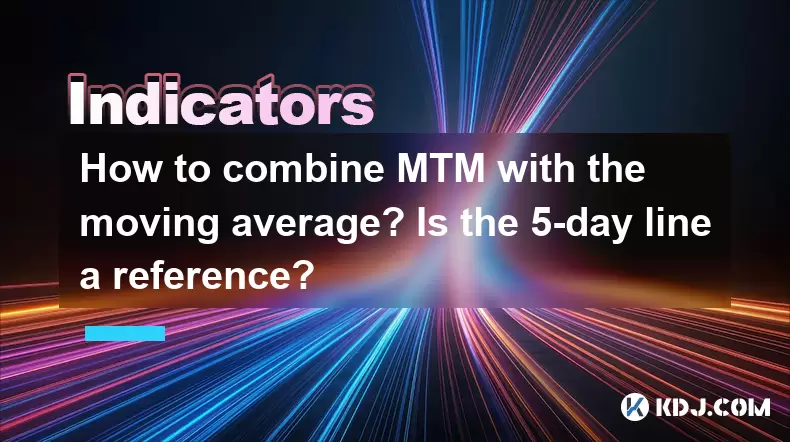
How to combine MTM with the moving average? Is the 5-day line a reference?
May 23,2025 at 03:35pm
Combining the Money Flow Index (MFI) with the moving average can provide a comprehensive approach to analyzing cryptocurrency market trends. The MFI, also known as the Money Flow Index, is a momentum indicator that measures the flow of money into and out of a security over a specified period. When combined with the moving average, traders can gain insig...
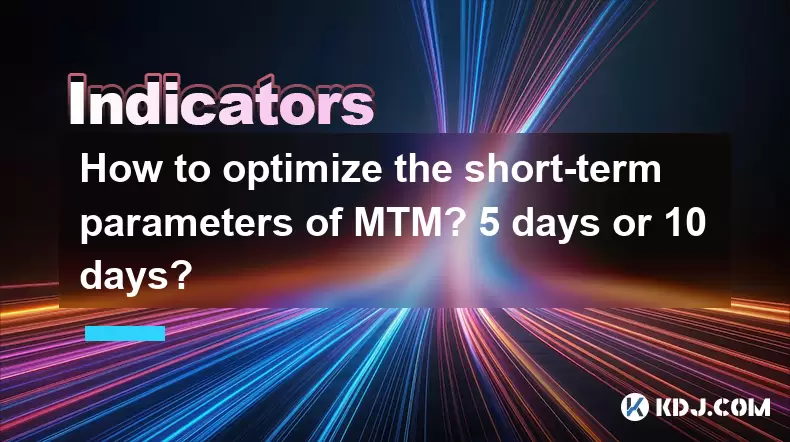
How to optimize the short-term parameters of MTM? 5 days or 10 days?
May 23,2025 at 08:07am
In the world of cryptocurrency trading, optimizing the short-term parameters of the Moving Time Model (MTM) is crucial for traders looking to maximize their profits. The MTM is a technical analysis tool that helps traders identify potential entry and exit points in the market by analyzing price movements over a specified period. The question of whether ...
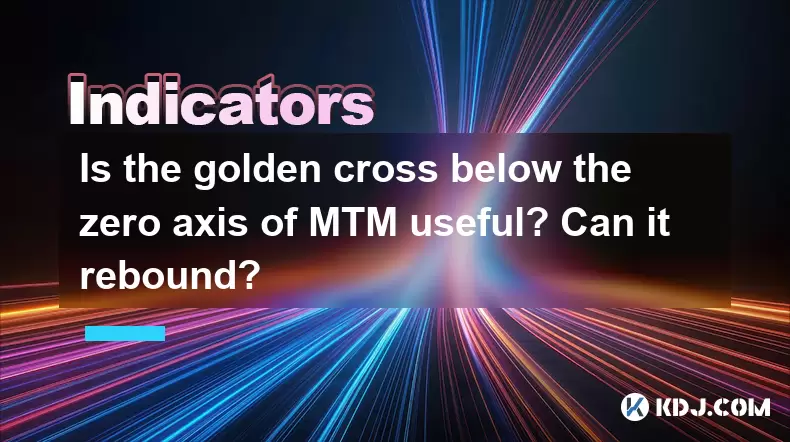
Is the golden cross below the zero axis of MTM useful? Can it rebound?
May 23,2025 at 10:28am
Understanding the Golden Cross and MTMThe golden cross is a technical analysis indicator that occurs when a short-term moving average crosses above a long-term moving average, signaling a potential bullish trend in the market. It is widely used among traders and investors to identify buying opportunities. On the other hand, the Money Flow Index (MFI) or...
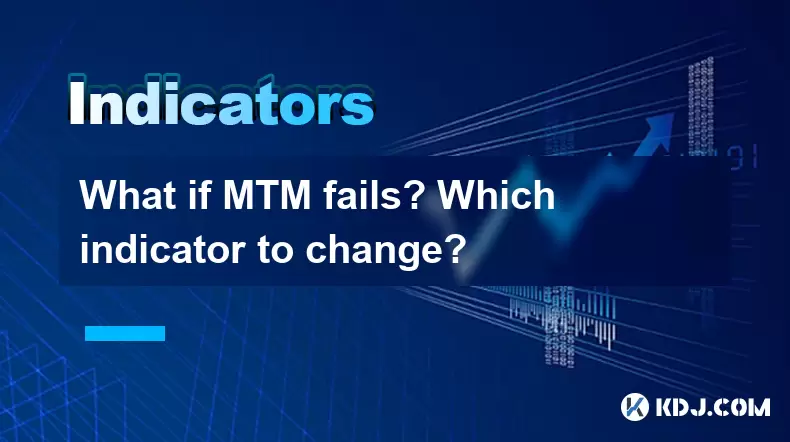
What if MTM fails? Which indicator to change?
May 23,2025 at 12:35am
Understanding MTM and Its ImportanceMoney Transfer Mechanism (MTM) is a critical component in the world of cryptocurrencies, especially when it comes to facilitating transactions between different parties. MTM ensures that funds move securely and efficiently from one wallet to another. However, like any system, MTM can sometimes fail, leading to delays,...
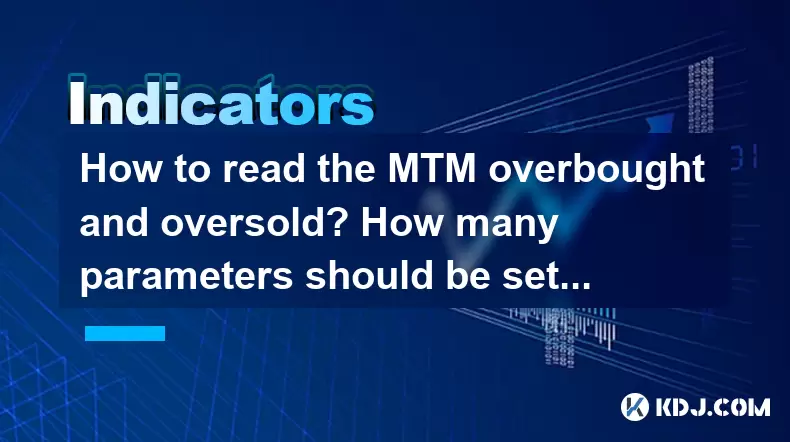
How to read the MTM overbought and oversold? How many parameters should be set?
May 23,2025 at 12:01am
Introduction to MTM IndicatorThe Money Flow Index (MFI), commonly referred to as the MTM (Money Flow Multiplier), is a momentum indicator that measures the strength of money flowing in and out of a security. It is similar to the Relative Strength Index (RSI) but incorporates volume, making it a more comprehensive tool for traders in the cryptocurrency m...
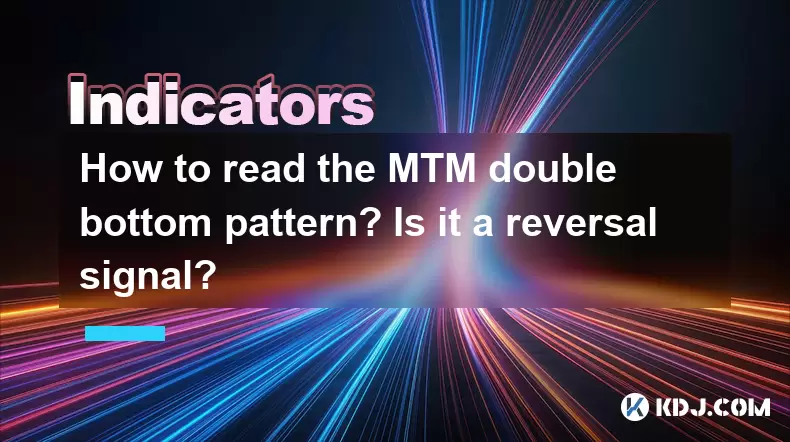
How to read the MTM double bottom pattern? Is it a reversal signal?
May 23,2025 at 03:21am
The MTM double bottom pattern is a technical analysis tool used by cryptocurrency traders to identify potential reversal points in a market trend. This pattern is particularly significant because it can signal a shift from a bearish to a bullish market, providing traders with opportunities to enter long positions. To understand and effectively read the ...

How to combine MTM with the moving average? Is the 5-day line a reference?
May 23,2025 at 03:35pm
Combining the Money Flow Index (MFI) with the moving average can provide a comprehensive approach to analyzing cryptocurrency market trends. The MFI, also known as the Money Flow Index, is a momentum indicator that measures the flow of money into and out of a security over a specified period. When combined with the moving average, traders can gain insig...

How to optimize the short-term parameters of MTM? 5 days or 10 days?
May 23,2025 at 08:07am
In the world of cryptocurrency trading, optimizing the short-term parameters of the Moving Time Model (MTM) is crucial for traders looking to maximize their profits. The MTM is a technical analysis tool that helps traders identify potential entry and exit points in the market by analyzing price movements over a specified period. The question of whether ...

Is the golden cross below the zero axis of MTM useful? Can it rebound?
May 23,2025 at 10:28am
Understanding the Golden Cross and MTMThe golden cross is a technical analysis indicator that occurs when a short-term moving average crosses above a long-term moving average, signaling a potential bullish trend in the market. It is widely used among traders and investors to identify buying opportunities. On the other hand, the Money Flow Index (MFI) or...

What if MTM fails? Which indicator to change?
May 23,2025 at 12:35am
Understanding MTM and Its ImportanceMoney Transfer Mechanism (MTM) is a critical component in the world of cryptocurrencies, especially when it comes to facilitating transactions between different parties. MTM ensures that funds move securely and efficiently from one wallet to another. However, like any system, MTM can sometimes fail, leading to delays,...

How to read the MTM overbought and oversold? How many parameters should be set?
May 23,2025 at 12:01am
Introduction to MTM IndicatorThe Money Flow Index (MFI), commonly referred to as the MTM (Money Flow Multiplier), is a momentum indicator that measures the strength of money flowing in and out of a security. It is similar to the Relative Strength Index (RSI) but incorporates volume, making it a more comprehensive tool for traders in the cryptocurrency m...

How to read the MTM double bottom pattern? Is it a reversal signal?
May 23,2025 at 03:21am
The MTM double bottom pattern is a technical analysis tool used by cryptocurrency traders to identify potential reversal points in a market trend. This pattern is particularly significant because it can signal a shift from a bearish to a bullish market, providing traders with opportunities to enter long positions. To understand and effectively read the ...
See all articles

























